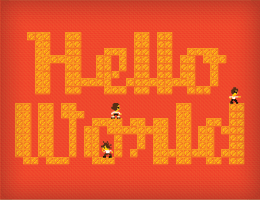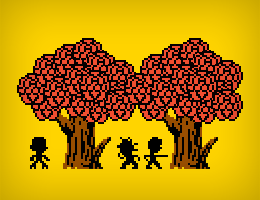Studio Fuse Innovates with Web-Log
While we have waited patiently—fingers crossed, heads in sand—it seems that blogs and social media in general are not going away any time soon. Though we’re certain that these things will have the relevance of telegrams some day—barreling as we are toward a Borg-like hive mind—it seems that that day is still a couple of years off. The hive mind is not happening in this election cycle, anyway. So we find ourselves, purveyors of communication solutions, submitting to the tide and boldly stepping into the present. Though a bit late to the game, we’d like to think the wait was worth it—for those of you who’ve been waiting…mom, or whoever.
Take a Right at the End of the Page
If you haven’t yet noticed, the layout is a bit different than most blogs; the site scrolls horizontally. Not only that, it scrolls incrementally. You can use your mouse or keyboard—or if on a touch device, your finger—to navigate left and right, one page at a time. Moreover, the site is responsive to screen size, adjusting the layout accordingly, all the way down to mobile screens. Magical? Yes. Magic? No.
Saving Trees, Losing Hair
We’d love to take credit for the code that makes it all work, but in actuality, neither our blog nor our recently rebooted main site would be anything without the open-source Treesaver platform. As designers who spend the majority of our time designing for print—including publications such as FORM—we were immediately taken with the promise Treesaver offered. In short, it seemed to be the perfect bridge between print and web. Indeed, the end result as created by Scott Kellum and the folks at Nomad is impressive, but getting there isn’t as easy as it looks. Bags were added to eyes, hairs were torn from heads in our implementing Treesaver. True, it was partially our personal learning curve. But also true, is that Treesaver is currently only on version 0.93-beta—so there is a lot in flux, and a lot yet to be resolved (there is no way to guarantee images will stay in the order you place them, for example). That said, it is a remarkable framework even its current form.
A Gimmick is Something a Marketer Does for Money
It would seem that some corners of the designer blogosphere feel that side-scrolling, multi-column publications are a gimmick—that they’re simply an appeal to the familiarity of print conventions. Though some horizontal sites are indeed a tedious novelty, we feel that Treesaver creates an effective digital analogue to page-turning—or perhaps, the unfolding of an accordion-style pamphlet. Unlike vertical scrolling, with the disorientation that occurs as one tries to follow the last line of text to the top of the screen, Treesaver gives the eye a consistent starting point, helping the reader move through the article. Further, multiple columns also improve the reading experience, as it is easier on the eyes to follow text in small chunks, as opposed to the wide lines of a typical single-column page. Indeed, one or two columns is not a matter of taste. We hope you’ll agree and will join us again on our horizontal, multi-column journey, even as we are still forging its path. In future posts, we’ll be covering design and the arts, as well as the goings-on of our own studio. Until then, feel free to comment or tweet @scottfuse. —Scott


